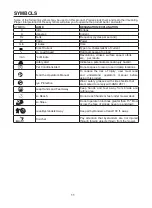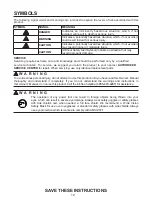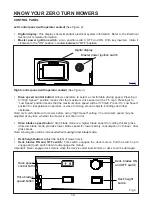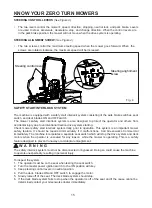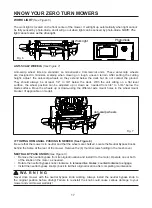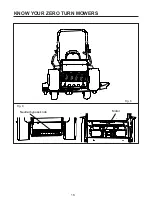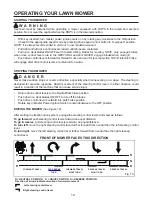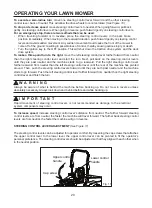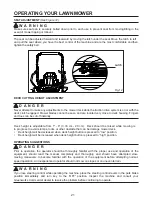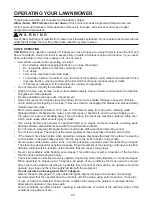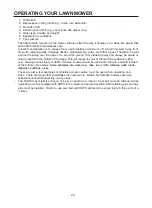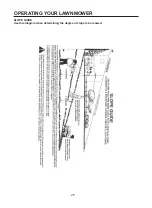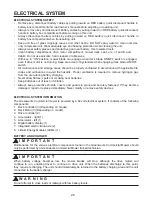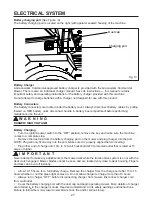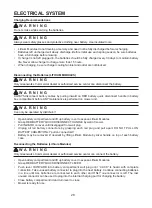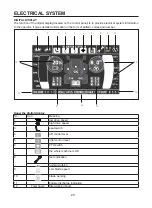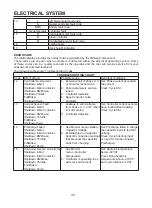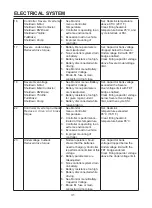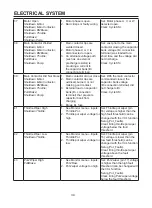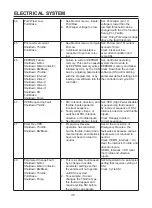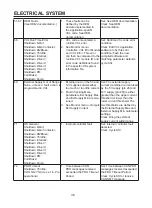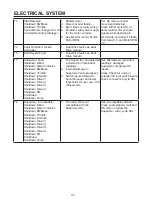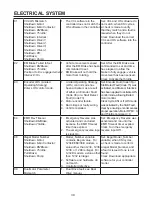
24
OPERATING YOUR LAWNMOWER
1.
Wet terrain
2.
Depressions in the ground
(e.g.,
holes, ruts, washouts
)
3.
Mounds of dirt
4. Certain types of soil (e.g.,
sand, loose dirt, gravel, clay
)
5.
Grass type, density, and height
6.
Extremely dry conditions
7.
Tire pressure
The attachments mounted to the mower will also affect the way it handles on a slope. Be aware that
each attachment’s characteristics vary.
Another consideration is to always mow a safe distance (minimum of 10 feet
/
3 meters) away from
drop-offs, retaining walls, drainage ditches, embankments, water, and other types of hazards to avoid
a wheel dropping over the edge or to avoid the ground from breaking away and always be aware of
what is located at the bottom of the slope. This will reduce the risk of the machine suddenly rolling
over
,
causing serious injury or death. Extreme caution should be used when there is a hazard located
at the
bottom of the slope.
Some examples are:
w
ater
(e.g.,
lake, river
),
cliffs, retaining walls, roads,
highways,
buildings, rocks.
These are just a few examples of situations
where
caution must be used when operating on a
slope.
There are many other possibilities too numerous to mention.
R
emember to always exercise
extreme
caution
while
operating on any slope.
• The ROPS may minimize chance of injury or death from rollover. Seat belt must be fastened while
operating a mower equipped with ROPS in the raised and secured position. Both retaining pins and hair
pins must be installed. Failure to use seat belt with ROPS will result in serious injury in the event of a
rollover.
Summary of Contents for 2508902
Page 18: ...18 Neutral bypass knob Motor KNOW YOUR ZERO TURN MOWERS Fig 8 Fig 9...
Page 54: ...54 EXPLODED VIEW...
Page 55: ...55 PARTS LIST...


